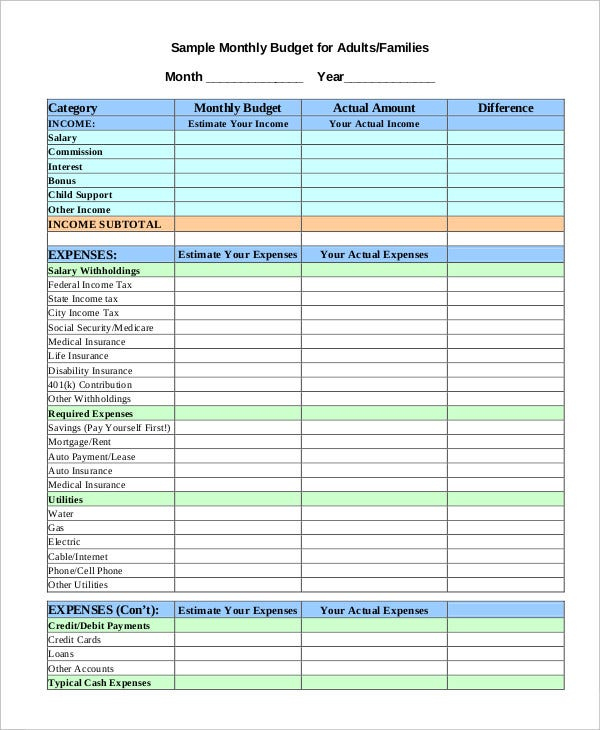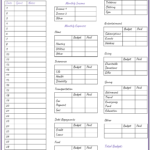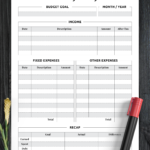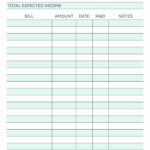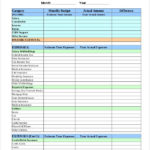17 Simple Monthly Budget Worksheets Word PDF Excel Free
17 Simple Monthly Budget Worksheets Word PDF Excel Free
17 Simple Monthly Budget Worksheets Word PDF Excel Free – A budget is necessary to keep track of your finances. The best method to keep track of your budget is to use the use of a printable. Budget templates can help you stay organized and on the right track.
There are many ways to create a budget. You can make use of a software application, a program, or even spreadsheets. However, if you’re looking for the most simple method of creating and monitor your budget, a printed budget sheet is the method to follow.
Online, you will find many printable budget sheets. They are accessible online for download for no cost or at a minimal cost. When you have found a template that you want to print, all you have to do is print it and begin tracking your expenditure.
Budgeting doesn’t have to be difficult. It takes little effort and some planning to get your finances in order.
Why Should You Use A Budget?
There are numerous reasons why households and individuals should consider budgets. A budget helps you track your savings and expenditure as well as assist you to make educated financial decisions. It is possible to use a budget to keep track of your financial goals.
It’s not difficult to establish your own budget. It is vital to be transparent with yourself about your incomes and expenses when creating your budget. In order to improve your financial situation adhere to the budget that you’ve created.
Related For Free Printable Monthly Budget Worksheet PDF
How To Use A Budget
Budgets are a vital instrument for managing your finances. Indicating your earnings and expenses can help you make educated choices about how to allocate your funds. Budgeting can seem daunting but with a little planning and work it is possible to stick to a budget.
Here are some suggestions for how you can make use of a budget:
- Make sure you know your expenses and income. The first step of creating your budget is keeping track of your income and expenses. This will provide you with the exact location of your cash is going.
- Create realistic goals. Set realistic goals when you know the direction of your money. You should be sure to account for the cost of variable items, like grocery and gas so that you don’t go over budget on other expenses.
- Stay on track.
Tracking Your Progression
Setting a budget is the first step towards controlling your financial situation. Once you’ve established an established budget, you must to track your progress to ensure you’re sticking to the plan. There are a variety of ways to do this.
A budget tracking app is available. These apps can be linked to your bank account so you can track your spending. They also aid you in setting your budget and monitor your performance in time.
A notebook or pen and paper is a different way to record your progression. This approach requires some manual work, but it is just as efficient as using an application. Simply record your income every month and then check your spending with the budgeted amount. This will allow you to identify areas where you can cut back or adjust your spending accordingly.
Free Printable Monthly Budget Worksheet PDF
The Benefits Of Budgeting
Although budgeting can seem tedious however, it’s an essential step in achieving financial stability. You can keep track of your expenses and put aside money to save and to be used for emergencies. After that, you are able to make adjustments as necessary.
Though it takes time to learn how to establish and follow your budget in a proper manner, the rewards are well worth it. A budget can allow you lower your the amount of debt you have, and save for long term goals, and help you avoid financial problems down the line.
If you’re unsure of where to start There are plenty of resources available to help create an effective budget. Success in financial planning is achievable once you start budgeting.
